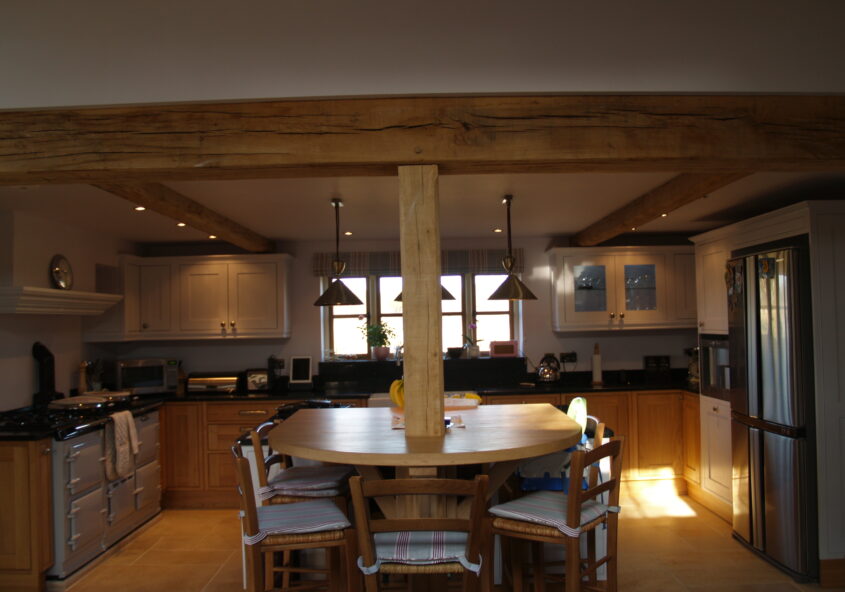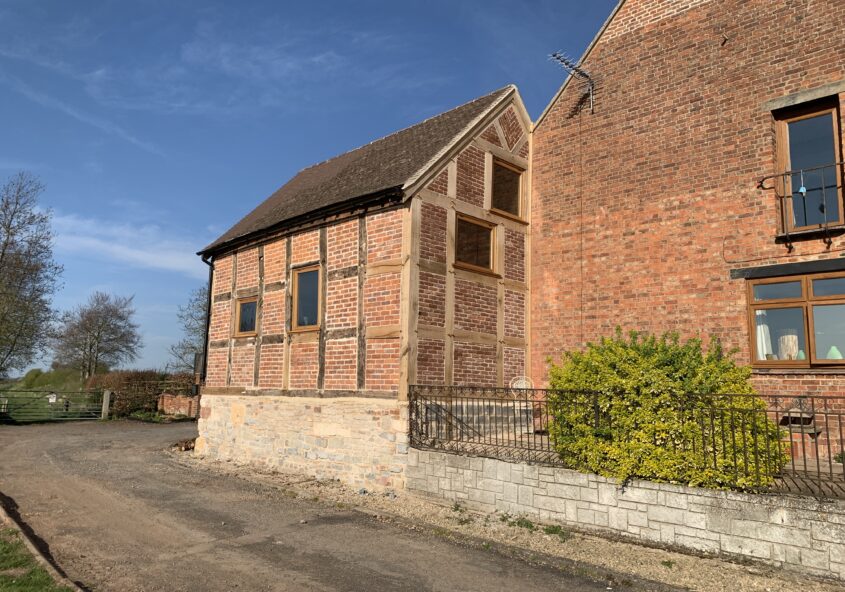Essential Guide: Here Is When To Get The House Repointed

If you own a historic property in Gloucestershire, Worcestershire, or Herefordshire, the need to repoint and keep your brickwork and stonework in good condition is crucial for maintaining the integrity of your home. Over time, the mortar between bricks or stones begins to erode, crack, or crumble, leaving your walls vulnerable to moisture damage, instability, and decay.
Repointing is the process of renewing this mortar, and for historic buildings, it must be done using the correct materials and techniques—especially in listed properties.
Signs That Your House Needs Repointing
You may need repointing if you notice:
✅ Cracked or missing mortar – Gaps in the mortar allow water to seep in, leading to damage.
✅ Loose or eroding bricks or stones – Movement or crumbling masonry is a sign that the mortar is failing.
✅ Damp patches on internal walls – Moisture ingress from failing mortar can lead to internal damp problems.
✅ Vegetation growing in mortar joints – Plants and moss growing in cracks indicate excess moisture retention.
✅ A hard or cement-based mortar in a period property – Many historic homes were repointed incorrectly in the past using cement mortar, which traps moisture and accelerates deterioration.
If your stonework or period brickwork shows any of these signs, it’s time to consider lime repointing.
Why Use Lime Mortar for Historic Buildings?
Many historic homes in Gloucester, the Cotswolds, and Ledbury were built using lime mortar, which allows the building to breathe and move naturally. Using modern cement mortar instead of lime can cause serious damage, including trapped moisture, cracking, and deterioration of the original brick or stone.
✅ Benefits of Lime Mortar:
-
Breathability – Allows moisture to evaporate, preventing damp problems.
-
Flexibility – Moves with the building, reducing the risk of cracking.
-
Historic authenticity – Preserves the original character of period properties.
At Spencer’s Builders, we specialise in lime pointing and stonework repairs for listed properties across Herefordshire, Worcestershire, and Gloucestershire.
How Often Should Repointing Be Done?
🕰 The lifespan of mortar joints varies depending on the building’s exposure to wind, rain, and temperature fluctuations. In well-maintained historic buildings, lime mortar can last over 100 years due to its flexibility and breathability. In contrast, cement mortar—commonly used in modern construction—can deteriorate far more quickly and, more critically, trap moisture within the walls. This often leads to accelerated decay of the surrounding stone or brickwork, sometimes within just a few decades.
For historic buildings, repointing should always be carried out with care and respect for the original structure:
🔹 Only when necessary – Unwarranted repointing can disturb historic fabric and accelerate wear. It’s best to repoint only areas where mortar has failed or erosion poses a risk.
🔹 With a close match to the original mortar – Matching colour, texture, and composition ensures a visually coherent and historically appropriate result, preserving the building’s character.
🔹 By skilled traditional builders – Proper repointing requires experience with heritage materials and techniques. Lime mortar must be applied and finished with an understanding of how older buildings breathe and move—something modern methods often overlook.
Expert Lime Repointing for Period Properties
At Spencer’s Builders, we provide expert repointing services using traditional lime mortar, ensuring your historic property remains structurally sound and true to its original character. Whether you need stonework repairs in the Forest of Dean or lime pointing in Redmarley, we can help. Or, if you’re unsure whether your property in Newent, Eldersfield, or Upton-on-Severn needs repointing, our expert team can assess the condition of your stonework or period brickwork.
Need advice on when to repoint your house? Contact us today for a consultation.
Also, if you’re unsure whether your repair project requires listed building consent, it’s always best to seek expert guidance before starting work. Every listed property is unique, and what may seem like a simple repair could impact its historic fabric. At Spencer’s Builders, we offer professional advice tailored to your specific building, helping you navigate conservation regulations with confidence. As experienced traditional builders working across Gloucestershire, Worcestershire, and Herefordshire, we can guide you through the process and ensure any work is carried out sensitively and compliantly.





